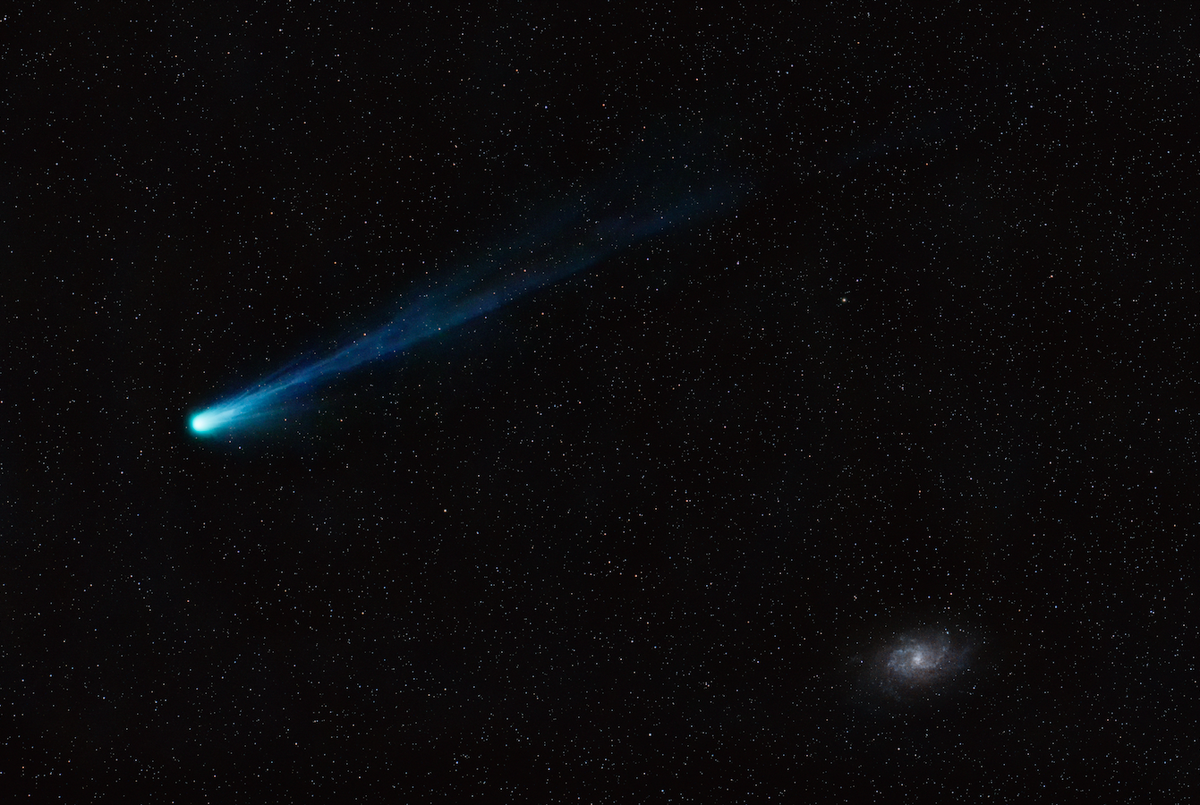This composition raises questions about the chemical nature of the object’s birthplace. Photo credit: Valerio Pardi/Shutterstock
How to discover 3I/ATLAS
The newly discovered object 3I/ATLAS (official name C/2025 N1) has surprised the astronomical community. It was detected by Chile’s ATLAS survey in early July 2025, but it quickly became clear that this was no ordinary comet. Its hyperbolic orbit meant it was not gravitationally bound to the Sun, confirming that 3I/ATLAS came from outside the solar system. This is only the third interstellar object observed to date, following ‘Oumuamua in 2017 and 2I/Borisov in 2019.
The discovery sparked an immediate international reaction. Astronomers from NASA, ESA, and observatories around the world raced to point their instruments at the object, hoping to capture data before it disappeared into the darkness. Within days, observations confirmed that the comet had a visible coma, a hazy crust of gas and dust that gives the comet its distinctive appearance. Unlike ‘Oumuamua, which remains oddly asteroid-like and has no tail, 3I/ATLAS is visibly active. This is a clear sign that volatile substances are evaporating as it approaches the Sun.
Early estimates suggest that the core is only a few kilometers across, but the dust and gas trail it leaves behind spans tens of thousands of kilometers. At its closest approach to the Sun (perihelion), the Sun is kept at a safe distance of approximately 1.4 AU, ensuring that it poses no threat to Earth. Still, the scientific importance of this discovery cannot be overstated. Each interstellar visitor provides a snapshot of the material that has formed around another star, providing valuable insight into how other planetary systems are built.
The mystery of its ingredients
what is so rare
What really captures scientists’ attention is the comet’s chemical composition. Spectral data from the James Webb Space Telescope and other instruments revealed an unusually high proportion of carbon dioxide (CO).₂) to water (H₂O) In a coma. Simply put, this comet contains far more carbon dioxide than the comets we are used to seeing around us.
This discovery raises some interesting possibilities. high CO₂ This level may suggest that 3I/ATLAS formed in the frigid part of its home system. There, carbon dioxide can easily freeze while water remains trapped. Alternatively, its long interstellar journey may have changed its outer layers, making carbon dioxide possible.₂ This is because it sublimates more easily when it enters the warmth of the sun. Astronomers also noticed that the comet’s jet, or stream of gas ejected from its core, behaved asymmetrically, with one side of the comet showing much more activity than the other. This may mean that the surface is mottled and heating of different areas is uneven. For researchers, this provides clues to the comet’s internal structure and its journey through the interstellar medium.
The media has sensationalized these unusual readings, calling them mysterious “signals” and some even suggesting that NASA has issued a “cosmic alert.” In fact, there is no evidence of anything artificial or alarming. “Signal” is a scientific term that refers to spectral data, a signature of light that helps astronomers identify the material that makes up a comet. The only “warning” NASA issued was to encourage observatories around the world to collect as much data as possible before the comet disappears from view.
Important points
- 3I/Atlas is the third confirmed interstellar object discovered by the ATLAS survey in July 2025.
- It follows a hyperbolic orbit, proving that it originated outside the solar system.
- Comet shows unusually high CO₂-to-H₂The O ratio in a coma has sparked debate about the conditions for its formation.
- It poses no danger to Earth as it passes far beyond Earth’s orbit.
- NASA and ESA use the James Webb Space Telescope and other observatories to study its composition and structure.
These important details illustrate why 3I/ATLAS is the focus of scientific excitement. Its chemistry and activity levels are vastly different from those of comets that have formed in our solar system, suggesting that planetary systems across the galaxy may be much more altered than previously thought.
For the general public, this is a reminder that “interstellar” does not mean “dangerous.” The comet’s arrival provides a rare scientific opportunity to glimpse material formed around another star, which has traveled for millions of years before briefly visiting our cosmic neighbourhood.
Unusual sky event for European observers
How to track 3I/ATLAS
This comet is invisible to the naked eye, but can be accessed with a moderate telescope and astrophotography setup. Observers are encouraged to:
- Follow the latest almanac for accurate coordinates.
- Emphasize comet jets and coma using appropriate filters.
- Don’t rely solely on social media images. Follow streams from pros or verified amateurs.
This careful observation allows both scientists and hobbyists to record the comet’s changing behavior, providing valuable data for ongoing research.
What we can learn from 3I/ATLAS
Scientists hope that 3I/ATLAS will reveal how many interstellar objects actually exist. No one had ever seen it until a few years ago. There have now been 3 cases detected in less than 10 years. This suggests that debris from other planetary systems is passing through our cosmic backyard more often than anyone thought.
Each interstellar visitor tells a slightly different story. ‘Oumuamua had a strange cigar-like shape and may have been part of a larger body. Borisov looked like a typical comet, but 3I/ATLAS has yet another twist. It is rich in carbon dioxide and is characterized by strange outgassing behavior. Taken together, these discoveries have the potential to reshape our understanding of how planets and comets form around other stars.








